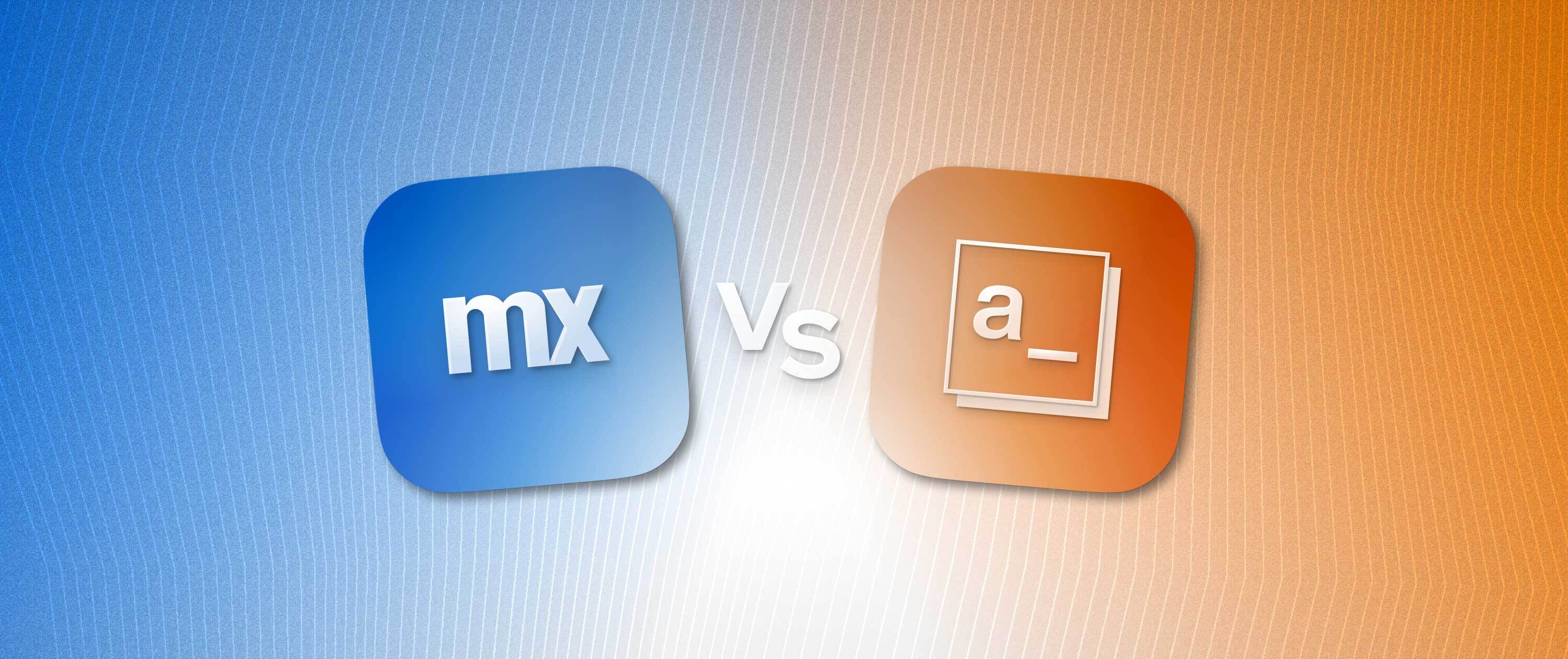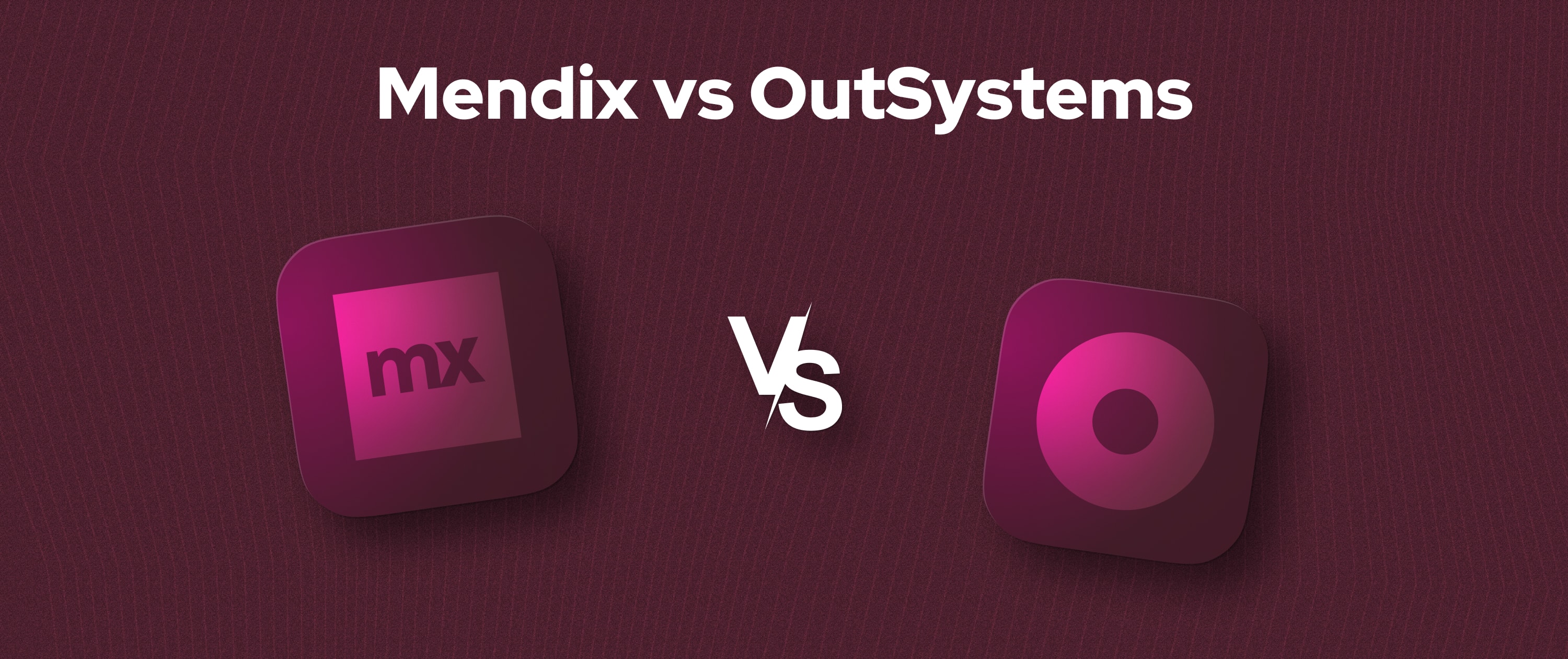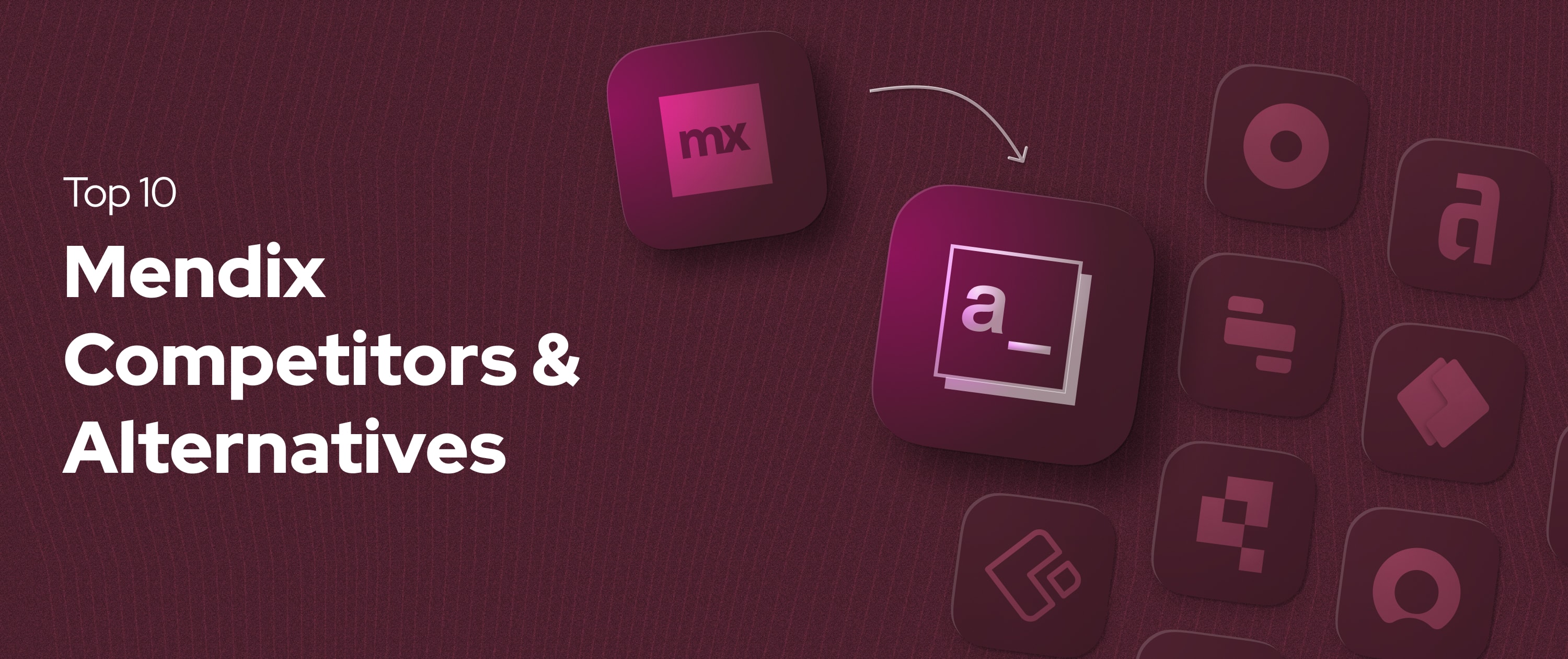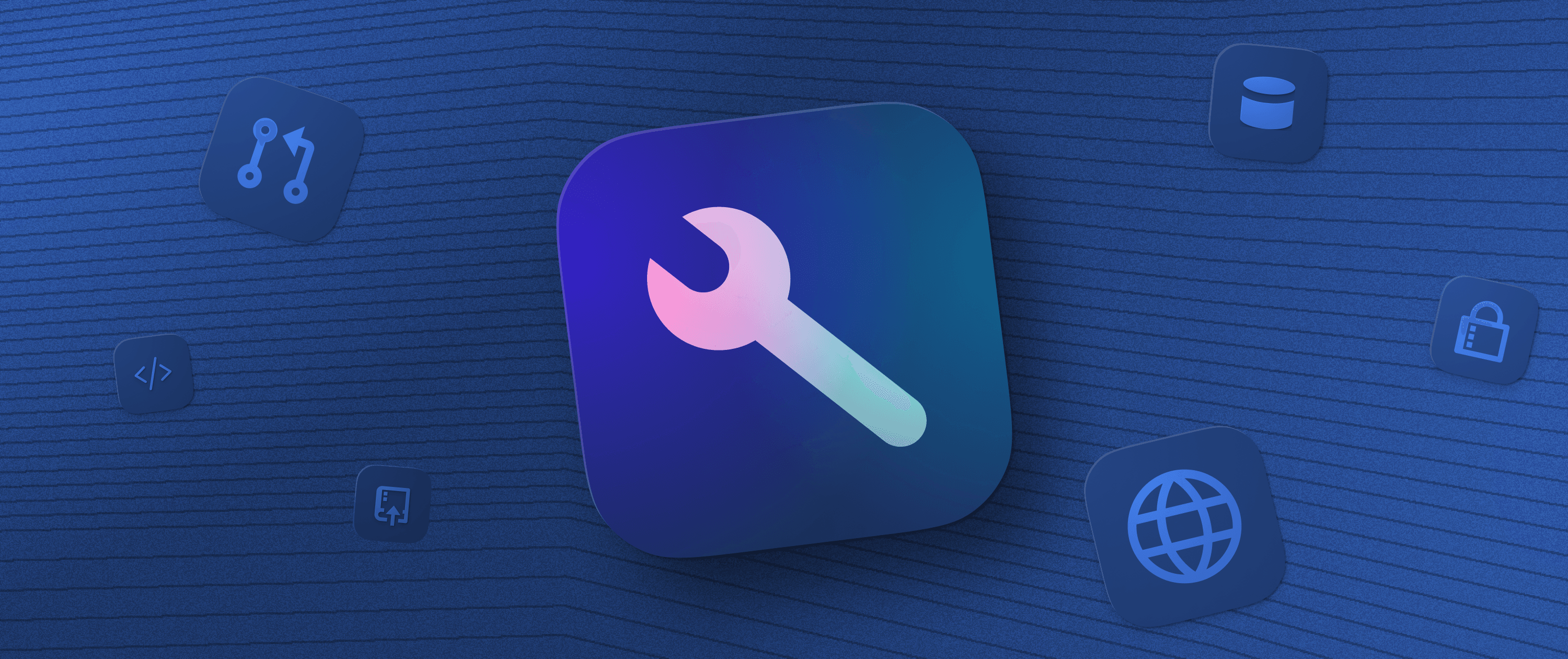Mendix Pricing Guide: Costs, Tiers & Hidden Fees


Building apps shouldn't break the bank. Yet many teams using Mendix find themselves surprised by unexpected costs as projects grow. The platform's pricing structure comprises multiple tiers and add-ons that can quickly accumulate.
What starts as an affordable solution might become a budget drain as you scale. With per-user pricing models, adding team members or expanding deployments can trigger significant cost increases. Nobody likes budget surprises six months into development.
To see how other companies optimize development costs, check out Appsmith’s customer stories for real-world results with open-source low-code.
This guide breaks down Mendix's pricing plans, revealing what you get at each tier. We'll review each plan, identify potential cost traps, and compare it with competitors.
What Do Mendix Users Say: Praises, Pitfalls, and Pricing Pain Points
Mendix’s low-code platform wins fans for its agility and enterprise-grade tools, but user reviews on portals like G2 and Capterra have revealed a consistent friction around costs and complexity. Here’s what some of the users had to say — and why pricing remains a thorny topic for the Mendix platform.
Overview of Mendix pricing plans
1. Free plan: the starter kit with limitations
2. Standard plan: Balancing reliability with mid-market needs
3. Premium plan: Enterprise-level power for global operations
Total Cost of Ownership (TCO): Detailed breakdown of Mendix pricing components
Mendix’s vs. Competitors’ pricing plans
Mendix in the mix: Trade-offs across low-code platforms
What makes Appsmith stand out?
What Do Mendix Users Say: Praises, Pitfalls, and Pricing Pain Points
5 Pricing Concerns Echoed Across Reviews
Transparent Pricing Matters: Why Appsmith is a Smarter Choice
Overview of Mendix pricing plans
Let's get real about what you'll pay for Mendix and what you'll get. The Mendix platform offers four primary pricing tiers, catering to developers of all kinds. Whether it’s a free version for students and solo developers or a Premium plan for enterprises, they have got it all.
Before diving into detailed breakdowns, here's a snapshot of what each plan delivers at its core:
Plan | Cost | Key Features | Best For |
Free | $€/month | - Basic app-building tools - Limited cloud deployment - Community support | Students, solo developers, or teams testing simple apps |
Standard | Starting at €900/month | - Ops Dashboard - Project dashboard - Dedicated database - Up to 4 environments per app - Additional deployment options are available as add-ons - IDP integration - Vertical scalability - 99.5% SLA guarantee - Customer success manager available | Mid-sized teams building mission-critical apps with reliability needs |
Premium | Custom pricing | - Access to private marketplace - Increased flexibility for separate environments - Advanced infrastructure control - Horizontal scalability available as add-on - Multi-region failover available as add-on - HA/ fallback available as add-on - 24/7 dedicated support | Large enterprises managing high-scale, complex deployments |
This table provides the headline numbers, but, as with any low-code application development platform, you need to pay closer attention to the fine print to understand its actual cost.
While the Mendix platform’s pricing structure appears straightforward at first glance, it lacks transparency regarding the costs of the add-on features.
Mendix pricing plans
Let’s strip away the marketing gloss to reveal what each Mendix tier delivers and what’s the catch is.
1. Free plan: the starter kit with limitations
Mendix's Free plan costs nothing but limits what you can build. You get two environments — one for local development and one for production on Mendix Cloud. While you'll have access to agile project management and collaborative development tools, you won't get project dashboards or advanced deployment options.
Best for:
Students exploring rapid application development
Individual developers creating internal tools
Early-stage startups validating app concepts
The fine print: Support is community-only with no uptime guarantees. You're on your own when problems arise.
2. Standard plan: Balancing reliability with mid-market needs
Starting at €900/month for one app (or €2,100/month for unlimited apps), the Mendix Standard plan introduces dedicated database tenancy and up to four environments per app.
You'll gain essential tools, including the ops dashboard, identity provider integration, and vertical scalability. Additionally, with this plan, you’ll have a dedicated customer success manager to guide you through your low-code development journey.
Note: With the Standard plan, you can expect additional fees that may be levied per user, per application, per month. Since it’s not explicitly mentioned on their pricing page, you’ll need to contact their sales team for further information.
Best for:
Mid-sized companies running department-wide applications
Teams needing reliable business tools with guaranteed uptime
IT departments require more advanced monitoring capabilities
The fine print: You still incur additional costs for private cloud deployment, and there is no horizontal scalability or multi-region failover.
3. Premium plan: Enterprise-level power for global operations
Custom-priced with "contact us" as the only option, Premium unlocks everything that Mendix has to offer. You gain access to flexible environments, advanced infrastructure control, private marketplace access, and 24/7 support with a 99.95% uptime guarantee. Additionally, the premium plan unlocks access to advanced features, including horizontal scalability, HA/fallback, and multi-region failover, but you’ll still incur additional fees for these features.
Best for:
Large enterprises running mission-critical systems
Organizations with complex compliance and security requirements
Teams building applications that must never go down
The fine print: The steep price tag comes with numerous features, and all deployment options are marked as "€", indicating additional charges beyond the base plan.
The Hidden Cost of Mendix Pricing
Mendix's pricing structure clearly distinguishes between casual users and serious business customers. The Free plans let you test the waters, but the Standard is where real business applications become viable. For critical systems, Premium is practically mandatory — but it comes with multiple add-on costs hidden behind the "Get a Quote" button.
Teams seeking predictable pricing may find Mendix's tiered structure challenging to budget for, particularly with many essential enterprise features marked as additional costs.
Hit a Wall with Mendix’s Free Tier?
Build real apps without shutdowns or community-only support. Appsmith’s free plan includes production-ready tools and 24/7 community help.
Total Cost of Ownership (TCO): Detailed breakdown of Mendix pricing components
Component | Details |
Base Subscription | Mendix offers three tiers: Free (€0), Standard (from €900 per month), and Premium (custom pricing). The base fee varies based on plan and deployment needs. |
User Licensing | Pricing may include per-user licensing for internal and external users, but Mendix does not publish exact rates. Fees and user definitions may change by contract. |
Add-On Features | Advanced integrations, extra environments, private marketplace, and enhanced analytics may incur additional costs, especially on the Standard and Premium tiers. |
Deployment Options | Mendix Cloud is included in most plans, but private cloud or on-premises deployments are available for an additional fee. On-premises deployments may incur a fixed fee regardless of server size. |
Support Level | Standard plans include business hours support; Premium offers 24/7 support and a 99.95% uptime SLA, both at a higher cost. |
Setup & Onboarding | Initial setup, configuration, data migration, and training may require additional investment, especially for larger teams or complex environments. |
Scaling Costs | As your app portfolio or user base grows, costs can rise sharply, both from higher user-license fees and the need for more environments or compute resources. |
External Users | Licensing for external users (partners, customers) may differ from that for internal users; details require a sales consultation. |
Annual Commitment | Premium and enterprise plans are often billed annually, which can impact cash flow and budgeting. |
Integration Fees | Integrating with third-party systems (e.g., SAP, Salesforce) may require additional connectors or custom development, which can increase the total cost of ownership (TCO). |
Key Takeaways for TCO
User Licensing Drives Cost: The per-user pricing model means costs can escalate quickly as your team or customer base grows.
Add-Ons and Upgrades: Features such as private cloud, additional environments, or advanced analytics are not always included and may require negotiating custom quotes or incurring extra fees.
Deployment Flexibility Comes at a Price: While Mendix Cloud is standard, private cloud or on-premises deployment options are priced separately and can significantly increase total cost of ownership (TCO) for organizations with strict compliance requirements.
Support and Uptime: Premium support and higher Service Level Agreements (SLAs) are only available on the top-tier plans, and these can be essential for mission-critical applications, so factor these into your budget.
Setup, Training, and Integration: Don’t overlook the cost of onboarding, training, and integrating Mendix with your existing systems, as these can be substantial for larger or more complex organizations.
Mendix’s total cost of ownership is shaped by your base plan, user licensing, additional features, deployment choices, and support needs.
Always request a detailed quote and clarify which features are included versus which are considered add-ons to avoid surprises as your usage grows.
Ready to Leave Mendix’s Pricing Puzzles Behind?
36,000+ developers already did. Join them with Appsmith’s open-source freedom.
Mendix’s vs. Competitors’ Pricing Plans
Before we proceed, let's examine how the Mendix platform compares to other major players in the low-code space.
Here’s a comparison table that’ll help you understand which of these software development platforms suits your requirements best. For a deeper dive into alternatives, check out our guide to Mendix competitors.
Feature | Mendix | Appsmith | OutSystems | Microsoft Power Apps |
Free Plan | Yes, Community Edition available | Yes, Community Edition available | Free trial only | Free developer edition |
Plan Price Range | Starts at €0/month | $0 to $15+ per user per month | Starts at $36,300/ year | $12 to $20 per user per month |
Pricing Approach | Fixed fees + Per-user based pricing model | Simple user-based pricing | Traditional enterprise model | Standard user-based licensing, Pay-as-you-go options |
Max Users for Paid Plan | Unlimited (varies by plan and license) | Unlimited users (varies by plan) | Unlimited users (varies by plan) | Unlimited users (varies by plan) |
Vendor Lock-in Risks | Yes; proprietary platform, license required for deployment | No; open-source, self-hosted option, retain full control | Yes; proprietary platform, license required for deployment | Yes; tied to the Microsoft ecosystem |
Integration Options | Comprehensive APIs, REST, SOAP, OData, database connectors, marketplace modules | 15+ native integrations, REST, GraphQL, DBs, APIs, built-in JS editor | Extensive APIs, databases, enterprise connectors, and custom integrations | Microsoft ecosystem-focused, connectors for MS services, limited non-MS integration |
Built-in JS Editor | No | Yes | Yes (limited scripting, not full JS) | No |
Learning Curve | Moderate to steep for complex apps | Low; intuitive, lots of documentation, strong community | Steep, especially for advanced features | Low for basic use, moderate for advanced |
Support | Community (Free), Email/Chat (higher tiers), 24/7 (Premium) | Community (Free), Email/Chat (Business), Dedicated (Enterprise) | Priority support on premium tiers | Community, Paid support for higher tiers |
Best For | Enterprises, regulated industries, Complex apps | Teams seeking flexibility, open-source, cost-effective scaling | Enterprises with complex, large-scale needs | Businesses in the Microsoft ecosystem |
The pricing comparison shows that the Mendix platform occupies a middle ground in the market. While more affordable than OutSystems' enterprise-focused offering (starting at $36,300 per year), Mendix is significantly costlier than platforms like Appsmith. Their pricing model, which combines fixed fees with per-user charges, presents challenges for growing teams, especially those building customer-facing applications with numerous external users.
Mendix in the mix: Trade-offs across low-code platforms
When comparing Mendix and OutSystems with their competitors, several patterns emerge.
OutSystems targets large enterprises with substantial budgets, making it impractical for smaller organizations to adopt. Microsoft Power Apps provides reasonable per-user pricing but locks users into the Microsoft ecosystem, limiting integration options outside their environment.
Mendix sits between these approaches with moderate entry pricing but adds complexity through various add-ons and feature tiers across its deployment environments.
What makes Appsmith stand out?
Appsmith distinguishes itself with straightforward pricing that starts free and scales predictably as your business grows. Unlike the proprietary nature of Mendix Cloud deployments, Appsmith's open-source foundation eliminates vendor lock-in concerns. This makes it particularly attractive for development teams that value both technical flexibility and cost predictability when building cross-platform applications.
For organizations seeking rapid application development without long-term commitments, Appsmith provides a clear path to adoption without sacrificing capability. Its integrated development environment supports professional developers while keeping the deployment strategy affordable and straightforward, crucial aspects for both startups and established businesses.
But don't just take our word for it. Next, we'll share candid feedback from actual Mendix users — both praise for its enterprise capabilities and frustrations with pricing increases. Beyond feature comparisons and pricing models, real-world experiences offer the most reliable measure of a platform's actual business value.
Stuck Between Overpriced and Inflexible?
Build the same apps for 1/10th the cost with Appsmith’s transparent pricing. Appsmith offers enterprise-grade tools at startup prices. No add-ons, no lock-in.
What Do Mendix Users Say: Praises, Pitfalls, and Pricing Pain Points
Mendix’s low-code platform wins fans for its agility and enterprise-grade tools, but user reviews on portals like G2 and Capterra have revealed a consistent friction around costs and complexity. Here’s what some of the users had to say — and why pricing remains a thorny topic for the Mendix platform.
“”In simpler terms while we can tweak apps to fit our needs to some extent, making significant changes for complex tasks is challenging. The cost for small to medium-sized organizations is somewhat high and should ideally be adjusted based on the scale of the operation. — Santosh K.
“”One of the main issues is its pricing structures, which can be a problem for most of the startups. Also, the dependency on Mendix components can create issues when trying to integrate with certain other tools.
“”Mendix might not be your go-to software if you are running on a tight budget, as the Licensing Cost is high.
Some training would be necessary for the effective use of the software. It's not a flawless software as you might encounter some brain frying bugs every now and then.
And lastly Mendix Studio Pro 9 to 10 switch could be a task as there is a slight support issue. But, I hope that the team is working on this and the switch is more comfortable for future users.
— Ansh K.
5 Pricing Concerns Echoed Across Reviews
High Entry Costs for SMBs: While Mendix’s Free plan supports unlimited users for prototyping, moving to production requires paid plans with fixed base fees and per-user charges. These costs can quickly escalate as teams grow, making it less accessible for startups and small to medium-sized businesses with tight budgets.
Hidden Fees for "Essential" Features: Users report add-ons like SAP Business Technology Platform integration, AI/ML tools, or multi-region deployments often require separate negotiations.
Per-User Pricing Limits Scalability: Mendix uses a user-based pricing model, counting every internal and external user against your plan limits. As customer adoption grows, especially for customer-facing applications, costs can rise quickly, potentially making scalability expensive for large user bases.
Vendor Lock-In and Migration Challenges: Mendix's proprietary elements create significant lock-in. Despite claims about openness, real-world migrations typically require rebuilding substantial portions of applications, as most export options capture only basic data, not application logic or workflows.
Complexity in Pricing Transparency: Although Mendix advertises transparent pricing, the actual cost structure can be opaque. Negotiations for enterprise features and add-ons often involve custom quotes, making it challenging for organizations to forecast their total expenses accurately.
Mendix stands out as one of the best low-code development platforms for large enterprises with deep pockets and complex needs. But for startups or teams prioritizing cost predictability, alternatives like Appsmith (open-source) may offer significantly better value.
Transparent Pricing Matters: Why Appsmith is a Smarter Choice
After reviewing Mendix’s pricing, it’s clear that what starts as simple tier-based pricing can quickly become a complex calculation.
For enterprises with large budgets and complex needs, Mendix’s model may be a suitable option. But for teams that want cost predictability, its per-user fees, add-on costs, and vendor lock-in risks often outweigh the benefits.
Appsmith, while also using seat-based pricing, stands out for its transparency and flexibility. As an open-source, self-hosted platform, Appsmith alleviates vendor lock-in concerns and provides a transparent, user-based pricing structure, from free (for up to 5 users) to just $15 per user per month for teams.
You only pay for active users, with no hidden developer costs or surprise add-ons. With features like a built-in JavaScript editor, 45+ widgets, and AI-assisted workflows, Appsmith brings enterprise-grade capabilities to any team size, without the enterprise price tag.
Ready to ditch the fine print? Over 10,000 teams (including AWS and GSK) already have.
See how Appsmith delivers enterprise power without enterprise prices — start free or book a demo to build faster, smarter, and lighter on your wallet.
Ready to Build Like the Big Players — Without Their Budget?
Appsmith’s open-source platform is free to start, fair to scale. Your move.
Is Mendix’s Free plan truly free?
Is Mendix’s Free plan truly free?
Yes, Mendix’s Free plan offers unlimited users and supports small applications, prototypes, and demos. However, it lacks advanced features like custom domains, guaranteed uptime, and dedicated support, which are essential for production-grade apps.
How does Mendix define and count users?
How does Mendix define and count users?
Mendix doesn't charge for anonymous users accessing applications or for developers building on the platform. However, named users with login credentials are counted toward licensing limits. User costs decrease somewhat with volume, but this still impacts pricing for customer-facing applications with many external stakeholders.
How does Mendix pricing work for external user applications?
How does Mendix pricing work for external user applications?
Mendix offers some pricing adjustments for applications with external users (like B2B or B2C portals) who access systems less frequently. However, you'll need to contact sales directly for specific pricing, as these aren't published in standard rates.
Are cloud deployment costs included in Mendix’s pricing?
Are cloud deployment costs included in Mendix’s pricing?
Cloud deployment costs are included only for Free plan (using the Mendix cloud). Standard and Premium tiers exclude cloud resources (AWS, SAP BTP), adding another element to your total cost of ownership.
How does Mendix pricing compare to open-source alternatives like Appsmith?
How does Mendix pricing compare to open-source alternatives like Appsmith?
Mendix uses a combination of fixed fees and per-user pricing that grows with adoption. Open-source alternatives like Appsmith typically offer more predictable pricing models with self-hosting options, eliminating vendor lock-in concerns while still enabling teams to build high-performing apps with faster development cycles.
How does Mendix handle scaling for high-traffic apps?
How does Mendix handle scaling for high-traffic apps?
Standard and premium plans of the Mendix platforms give access to advanced features like vertical scaling (more RAM/CPU) and horizontal scaling (extra nodes), which again come with additional costs. Costs rise sharply with Mendix plans, especially for mission-critical applications.
Are cloud resources included in the license price?
Are cloud resources included in the license price?
The Free package includes shared Mendix cloud resources. For Standard and Premium, there are additional charges since these costs are computed separately, so you can opt between private and public cloud deployment based on your existing investments.
Can I build unlimited apps on Mendix?
Can I build unlimited apps on Mendix?
Yes. Both the Free and all paid tiers support unlimited applications, making Mendix a versatile software development tool for cross‑platform application development.
Does Mendix charge separately for mobile application development?
Does Mendix charge separately for mobile application development?
No, native mobile apps development is included in all Mendix plans. However, advanced mobile features like offline functionality may require higher-tier plans depending on your requirements.


